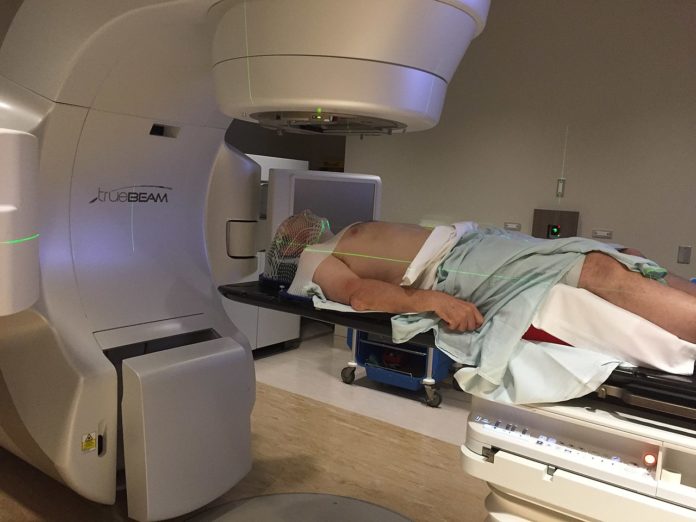
A single dose of targeted radiotherapy is safe and effective for low risk prostate cancer in men
A single high dose of radiation that can be delivered directly to the tumour within a few minutes is a safe and effective technique for treating men with low risk prostate cancer, according to a study presented at the ESTRO 38 conference.
Radiotherapy traditionally involves a series of lower dose treatments that take place over several days or week. The new treatment is called high dose-rate brachytherapy and it delivers radiation via a set of tiny tubes.
Researchers say this technique could offer an effective treatment that is convenient for patients and brings potential time and cost savings for hospitals.
“Brachytherapy, where we use temporary catheters to directly treat tumours, has already proved to be a good treatment for prostate cancer, both in terms of killing the cancer cells and minimising side effects. This usually means patients make four to six visits to the hospital for a series of lower dose treatments. We wanted to see whether we could get similar results but with just one high dose treatment, saving time for the patient and the hospital,” said Dr Hannah Tharmalingam, a Clinical Research Fellow at Mount Vernon Cancer Centre, Northwood, and The Christie NHS Foundation Trust, Manchester, UK.
According to PSA levels, 94% of men showed no sign of the cancer returning after 2 years. For men with low risk cancer this figure was 100%, in men with medium risk it was 95% and in men with high risk cancer it was 92%
The study involved 441 men with prostate cancer who were treated at one of seven UK hospitals between 2013 and 2018. Their cancers were classified, depending on how likely they were to spread, as either low risk (total of 44 men), medium risk (285 men) or high risk (112 men). All were treated with a single high dose (19 Gy) of radiation; 166 men also received hormone therapy but none had any surgery or chemotherapy.
The participants were followed up for an average of 26 months. Their prostate specific antigen (PSA) levels were measured at two years after the treatment and again three years after the treatment. If levels increase, this can indicate the cancer has returned.
According to PSA levels, 94% of men showed no sign of the cancer returning after 2 years. For men with low risk cancer this figure was 100%, in men with medium risk it was 95% and in men with high risk cancer it was 92%. After three years, the overall figure was 88%, and in men with low, medium and high risk cancers, the figures were 100%, 86% and 75% respectively.
At the time of the treatment, there were no serious side effects. Two men later developed urethral strictures that required surgery and two developed rectal fistulae that required colostomy.








